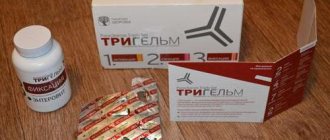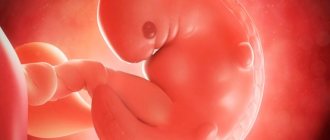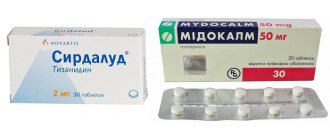Amitriptyline is an antidepressant, and according to its group membership it is a tricyclic compound.
The mechanism of therapeutic action is based on inhibition of the reverse neuronal uptake of norepinephrine and serotonin. As a result, their concentration in the synapses of the central nervous system increases significantly. Additional positive effects from taking include central analgesic, antibulemic and antiulcer effects.
On this page you will find all the information about Amitriptyline: complete instructions for use for this drug, average prices in pharmacies, complete and incomplete analogues of the drug, as well as reviews from people who have already used Amitriptyline. Would you like to leave your opinion? Please write in the comments.
Indications for use
According to the instructions, Amitriptyline is prescribed for the treatment of depressive states of involutional, reactive, endogenous, medicinal nature, as well as depression due to alcohol abuse, organic brain damage, accompanied by sleep disturbances, agitation, and anxiety.
Indications for the use of Amitriptyline are:
- Schizophrenic psychoses;
- Emotional mixed disorders;
- Behavioral disorders;
- Nocturnal enuresis (except that caused by low bladder tone);
- Bulimia nervosa;
- Chronic pain (migraine, atypical facial pain, pain in cancer patients, post-traumatic and diabetic neuropathy, rheumatic pain, postherpetic neuralgia).
Amitriptyline is also used for gastrointestinal ulcers, to relieve headaches and prevent migraines.
Indications
The prescription of Nortriptyline is justified in the following cases:
- Clinical depression of mild to moderate severity;
- Symptomatic mild depression;
- Bipolar disorder, current episode of depression;
- Decreased mood in old age due to atherosclerosis of the cerebral arteries;
- Treatment of reserpine withdrawal syndrome (in combination with tertiary amines);
- Treatment of depression in schizophrenia and schizoaffective disorders (in combination with antipsychotics);
- Enuresis in children over 6 years of age;
- Smoking cessation accompanied by symptoms of depression.
Contraindications
Amitriptyline is contraindicated for use if the following conditions develop:
- individual intolerance to the active substance;
- with a pronounced increase in blood pressure;
- with severe dysfunction of the liver and urinary system;
- heart failure (in the stage of decompensation);
- acute heart attack and recovery period after a similar condition;
- for cardiac muscle conduction disorders;
- exacerbations of gastric and duodenal ulcers;
- the drug is not used in the treatment of pregnant and lactating women, as well as patients under 6 years of age.
Simultaneous use with MAO inhibitors is strictly contraindicated in patients with bladder atony, intestinal obstruction and prostatic hypertrophy.
The drug is used with extreme caution in the treatment of people with a history of alcoholism, bronchial asthma, a tendency to manic-depressive psychosis, epilepsy, hyperthyroidism, angina pectoris, heart failure, angle-closure glaucoma, intraocular hypertension, schizophrenia.
Use during pregnancy and lactation
In pregnant women, the drug should be used only if the expected benefit to the mother outweighs the potential risk to the fetus.
Passes into breast milk and may cause drowsiness in nursing infants. To avoid the development of withdrawal syndrome in newborns (manifested by shortness of breath, drowsiness, intestinal colic, increased nervous excitability, increased or decreased blood pressure, tremor or spastic phenomena), amitriptyline is gradually discontinued at least 7 weeks before the expected birth.
Amitriptyline price, where to buy
The price of Amitriptyline in 10 mg tablets in Russia is 25 rubles for 50 pieces. You can buy 25 mg tablets in Moscow for 35 rubles per 50 pieces.
- Online pharmacies in RussiaRussia
- Online pharmacies in UkraineUkraine
- Online pharmacies in KazakhstanKazakhstan
ZdravCity
- Amitriptyline tablets 25 mg 50 pcs. OzonOzon LLC
Pharmacy Dialogue
- Amitriptyline (25 mg tablet No. 50) Ozone LLC
- Amitriptyline tablets 10 mg No. 50 Alsi Pharm
- Amitriptyline (25 mg tablet No. 50) Moscow Endocrine Plant
show more
Pharmacy24
- Amitriptyline 25 mg No. 50 tablets PrAT "Technolog", Uman, Cherkasy region, Ukraine
- Amitriptyline 25 mg N25 tablets TOV Doslidniy, Ukraine/TOV FC Zdorovya, Ukraine
PaniPharmacy
- Amitriptyline tablets Amitriptyline h/x tablets. w/o 0.025g No. 50 control. cell unitary enterprise Ukraine, OZ GNTsLS LLC
- Amitriptyline ampoule Amitriptyline liquid solution d/in. 10mg/ml amp. 2ml No. 10 Ukraine, Health of the people LLC
- Amitriptyline tablets Amitriptyline h/x tablets. 0.025g No. 25 Ukraine, OZ GNTsLS LLC
- Amitriptyline liquid solution d/in. 1% amp. 2ml No. 10 Ukraine, OZ GNTsLS
- Amitriptyline tablets Amitriptyline h/x tablets. 0.025g No. 50 Ukraine, Health of the people LLC
show more
Instructions for use Amitriptyline
The instructions for use indicate that Amitriptyline tablets are prescribed orally (during or after meals).
- The initial daily dose when taken orally is 50-75 mg (25 mg in 2-3 doses), then the dose is gradually increased by 25-50 mg until the desired antidepressant effect is obtained. The optimal daily therapeutic dose is 150-200 mg (the maximum dose is taken at night).
- For severe depression resistant to therapy, the dose is increased to 300 mg or more, to the maximum tolerated dose. In these cases, it is advisable to begin treatment with intramuscular or intravenous administration of the drug, using higher initial doses, accelerating the increase in dosage under the control of the somatic condition. After obtaining a stable antidepressant effect after 2-4 weeks, the dose is gradually and slowly reduced.
- If signs of depression appear when reducing doses, you should return to the previous dose. If the patient's condition does not improve within 3-4 weeks of treatment, then further therapy is not advisable.
In elderly patients with mild disorders, in outpatient practice, doses are 25-50-100 mg (max) in divided doses or 1 time per day at night. For the prevention of migraines, chronic neurogenic pain (including long-term headaches) from 12.5-25 mg to 100 mg/day. Interaction with other drugs Amitriptyline potentiates the inhibition of the central nervous system by the following drugs: antipsychotics, sedatives and hypnotics, anticonvulsants, central and narcotic analgesics, anesthetics, alcohol.
Pharmacological properties
Pharmacodynamics
Amitriptyline is a tricyclic antidepressant belonging to the group of non-selective inhibitors of neuronal monoamine uptake. It is characterized by pronounced sedative and thymoanaleptic effects.
The mechanism of the antidepressant effect of the drug is due to the suppression of the neuronal reuptake of catecholamines (dopamine, norepinephrine) and serotonin in the central nervous system. Amitriptyline exhibits the properties of an antagonist of muscarinic cholinergic receptors in the peripheral and central nervous system, and it is also characterized by peripheral antihistamine associated with H1 receptors and antiadrenergic effects. The substance has antineuralgic (central analgesic), antibulimic and antiulcer effects, and also helps eliminate bedwetting. The antidepressant effect develops within 2–4 weeks after the start of use.
Pharmacokinetics
Amitriptyline has a high degree of absorption in the body. After oral administration, its maximum concentration is reached after approximately 4–8 hours and is equal to 0.04–0.16 μg/ml. Steady-state concentrations are determined approximately 1–2 weeks after the start of therapy. The content of amitriptyline in blood plasma is less than in tissues. The bioavailability of the substance, regardless of its route of administration, varies from 33 to 62%, and its pharmacologically active metabolite nortriptyline - from 46 to 70%. The volume of distribution is 5–10 l/kg. Therapeutic concentrations of amitriptyline in the blood, which have proven effectiveness, are 50–250 ng/ml, and the same indicators for the active metabolite of nortriptyline are 50–150 ng/ml.
Amitriptyline binds to plasma proteins by 92–96%, overcomes histohematic barriers, including the blood-brain barrier (the same applies to nortriptyline) and the placental barrier, and is also detected in breast milk in concentrations similar to plasma concentrations.
Amitriptyline is metabolized mainly through hydroxylation (the CYP2D6 isoenzyme is responsible for it) and demethylation (the process is controlled by the CYP3A and CYP2D6 isoenzymes) with the subsequent formation of conjugates with glucuronic acid. Metabolism is characterized by significant genetic polymorphism. The main pharmacologically active metabolite is the secondary amine, nortriptyline. The metabolites cis- and trans-10-hydroxynortriptyline and cis- and trans-10-hydroxyamitriptyline have an activity profile almost similar to that of nortriptyline, but their effect is less pronounced. Amitriptyline-N-oxide and demethylnortriptyline are detected in blood plasma only in trace concentrations, and the first metabolite has almost no pharmacological activity. Compared to amitriptyline, all metabolites are characterized by a significantly less pronounced m-anticholinergic effect. The rate of hydroxylation is the main factor determining renal clearance and, accordingly, plasma levels. A small percentage of patients experience a genetically determined decrease in the rate of hydroxylation.
The plasma half-life of amitriptyline is 10–28 hours for amitriptyline and 16–80 hours for nortriptyline. On average, the total clearance of the active substance is 39.24 ± 10.18 l/h. Amitriptyline is excreted mainly in urine and feces in the form of metabolites. Approximately 50% of the administered dose is excreted via the kidneys as 10-hydroxy-amitriptyline and its glucuronic acid conjugate, approximately 27% is excreted as 10-hydroxy-nortriptyline and less than 5% of amitriptyline is excreted as nortriptyline and unchanged. The drug is completely eliminated from the body within 7 days.
In elderly patients, the rate of metabolism of amitriptyline decreases, which leads to a decrease in drug clearance and an increase in half-life. Liver dysfunction can provoke a slowdown in the rate of metabolic processes and an increase in the content of amitriptyline in the blood plasma. In patients with renal dysfunction, the excretion of nortriptyline and amitriptyline metabolites is slowed down, but metabolic processes are similar. Since amitriptyline binds well to plasma proteins, its removal from the body by dialysis is almost impossible.
Prescribed intramuscularly or intravenously.
For severe depression resistant to therapy: intramuscularly or intravenously (administer slowly!) at a dose of 10-20-30 mg up to 4 times a day, the dose should be increased gradually, the maximum daily dose is 150 mg; after 1-2 weeks they switch to taking the drug orally. Children over 12 years of age and the elderly are given lower doses and increased more slowly.
When amitriptyline is used together with neuroleptics and/or anticholinergic drugs, a febrile temperature reaction and paralytic intestinal obstruction may occur. Amitriptyline potentiates the hypertensive effects of catecholamines, but inhibits the effects of drugs affecting the release of norepinephrine.
Amitriptyline may reduce the antihypertensive effect of sympatholytics (octadine, guanethidine and drugs with a similar mechanism of action).
When taking amitriptyline and cimetidine simultaneously, it is possible to increase the plasma concentration of amitriptyline.
Concomitant use of amitriptyline with MAO inhibitors can be fatal. The break in treatment between taking MAO inhibitors and tricyclic antidepressants should be at least 14 days!
Antidepressant composition
By its chemical nature, Amitriptyline is a tricyclic antidepressant, i.e. the molecules of the substance consist of three carbon rings. It is the main representative of this class of antidepressants along with Imipramine and Clomipramine. The principle of action of the drug is based on the process of reducing the rate of uptake of various neurotransmitters (chemicals that transmit impulses between nerve cells). For ease of administration, Amitriptyline is produced in tablets that are coated with a special coating.
Each capsule contains:
- the main substance is amitriptyline hydrochloride;
- auxiliary components - magnesium stearate, povidone, talc and cellulose with starch.
In addition, the manufacturer uses propylene glycol and hypromellose in the capsule shell. Amitriptyline tablets have different dosages - 10 and 25 mg. They look the same - biconvex, white. You can purchase the medicine in plastic blisters or in a glass bottle, and each package contains detailed paper instructions.
Side effects
According to reviews of Amitriptyline, the most common side effects of the drug are: increased intraocular pressure, accommodation disturbances, constipation, urinary retention, dry mouth, intestinal obstruction, drowsiness, increased body temperature.
In addition, patients may experience the following side effects:
- Central nervous system disorders: dizziness, drowsiness, tremor;
- disorders of the gastrointestinal tract: taste disturbance, stomatitis, nausea, vomiting, development of anorexia, in rare cases, liver dysfunction;
- disturbances in the functioning of the cardiovascular system: tachycardia, increased blood pressure, orthostatic hypotension, etc.;
- allergic reactions. According to reviews of Amitriptyline, some patients experienced rashes and other allergic reactions;
- endocrine system disorders: decreased libido and potency, changes in ADH secretion, gynecomastia.
After reading reviews about Amitriptyline, you can find information that long-term use of the drug can lead to weight gain.
The drug is prescribed with caution to people with manic-depressive psychosis; there is a risk of the disease progressing to the manic stage.
It should also be remembered that the use of Amitriptyline in tablets with a daily dose of the drug above 150 mg leads to a decrease in the threshold of convulsive activity. Therefore, patients with a history of seizures, as well as those in whom they may occur due to age or injury, need to consider the risk of seizures.
Side effects
The use of Amitriptyline can cause blurred vision, difficulty urinating, dry mouth, increased intraocular pressure, increased body temperature, constipation, and functional intestinal obstruction.
Usually, all these side effects disappear after reducing the prescribed doses or after the patient gets used to the drug.
In addition, during treatment with the drug the following may be observed:
- Weakness, drowsiness and fatigue;
- Ataxia;
- Insomnia;
- Dizziness;
- Nightmares;
- Confusion and irritability;
- Tremor;
- Motor agitation, hallucinations, impaired attention;
- Paresthesia;
- Convulsions;
- Arrhythmia and tachycardia;
- Nausea, heartburn, stomatitis, vomiting, discoloration of the tongue, epigastric discomfort;
- Anorexia;
- Increased activity of liver enzymes, diarrhea, jaundice;
- Galactorrhea;
- Changes in potency, libido, testicular swelling;
- Urticaria, itching, purpura;
- Hair loss;
- Enlarged lymph nodes.
Overdose
The severity of the described side effects may increase.
Acute amitripilene poisoning poses a danger to the patient’s life, even with satisfactory general condition and preservation of respiratory function. Seizures and severe disruption of vital body functions can occur unexpectedly. A sign of a severe cardiotoxic effect - prolongation of the OK5 complex on the ECG - may appear only 3-5 days (latent period) after taking a toxic dose. –
Treatment: In case of overdose, call an ambulance immediately.
special instructions
Before carrying out therapy, monitoring blood pressure levels is mandatory. Parenteral Amitriptyline is administered exclusively under the supervision of a physician in a hospital setting. In the first days of treatment it is necessary to observe bed rest. A complete abstinence from ethanol intake is required.
Abrupt refusal of therapy can cause withdrawal syndrome. The drug at a dose of more than 150 mg per day leads to a decrease in the threshold of convulsive activity, which is important to consider when developing epileptic seizures in patients with a predisposition. It is possible to develop hypomanic or manic states in persons with cyclical, affective disorders during the depressive phase. If necessary, treatment is resumed with small doses after relief of these conditions. Caution should be exercised when treating patients with thyrotoxicosis when treating individuals taking thyroid hormone medications due to the possible risk of cardiotoxic effects.
The medication can provoke the development of paralytic intestinal obstruction in elderly people, as well as those prone to chronic constipation. It is imperative to warn anesthesiologists about taking amitriptyline before performing local or general anesthesia. Long-term therapy provokes the development of caries. The need for riboflavin may increase. Amitriptyline passes into breast milk and causes increased drowsiness in infants. The medication affects driving.
Similar drugs:
- Fluoxetine Nycomed Capsule
- Amitriptyline-Apo Oral tablets
- Amitriptyline-LANS Solution for intramuscular administration
** The Drug Directory is intended for informational purposes only. For more complete information, please refer to the manufacturer's instructions. Do not self-medicate; Before starting to use the drug Amitriptyline-LENS, you should consult a doctor. EUROLAB is not responsible for the consequences caused by the use of information posted on the portal. Any information on the site does not replace medical advice and cannot serve as a guarantee of the positive effect of the drug.
Are you interested in the drug Amitriptyline-LENS? Do you want to know more detailed information or do you need a doctor's examination? Or do you need an inspection? You can make an appointment with a doctor - the Euro lab is always at your service! The best doctors will examine you, advise you, provide the necessary assistance and make a diagnosis. You can also call a doctor at home . Euro lab clinic is open for you around the clock.
** Attention! The information presented in this medication guide is intended for medical professionals and should not be used as a basis for self-medication. The description of the drug Amitriptyline-LENS is provided for informational purposes only and is not intended for prescribing treatment without the participation of a physician. Patients need to consult a specialist!
If you are interested in any other drugs and medications, their descriptions and instructions for use, information about the composition and form of release, indications for use and side effects, methods of use, prices and reviews of drugs, or you have any other questions and suggestions - write to us, we will definitely try to help you.
Drug interactions
- Simultaneous use with Clonidine and Guanethidine leads to a decrease in the therapeutic effect of the latter, associated with a decrease in blood pressure;
- Simultaneous use with drugs that block monoamine oxidase leads to a sharp increase in blood pressure;
- Simultaneous use with Sucralfate leads to a significant decrease in the absorption of Amitriptyline and an increase in its plasma concentration;
- Simultaneous use with Fluoxetine, Quinidine and Cimetidine leads to an increase in the concentration of Amitriptyline and the development of symptoms of poisoning;
- When used simultaneously with drugs that have a blocking effect on acetylcholine receptors, a depressant effect on the central nervous system, lowering blood pressure, drugs that have a therapeutic effect associated with the activity of the heart and drugs containing ethyl alcohol or alcoholic beverages, there is a significant increase in the therapeutic effect of the latter .
- Simultaneous use with Carbamazepine leads to increased excretion of Amitriptyline from the body and a sharp decrease in its therapeutic effects.
Interaction
A hypotensive effect, respiratory depression , and a depressant effect on the nervous system are observed with the joint prescription of medications that depress the central nervous system: general anesthetics, benzodiazepines, barbiturates, antidepressants and others. The drug enhances the severity of the anticholinergic effect when taking amantadine , antihistamines , biperiden, atropine, antiparkinsonian drugs, phenothiazine. The drug enhances the anticoagulant activity of indadione, coumarin derivatives, and indirect anticoagulants. There is a decrease in the effectiveness of alpha-blockers and phenytoin. Fluvoxamine , fluoxetine increase the concentration of the drug in the blood. The risk of developing epileptic seizures increases, and the central anticholinergic and sedative effects also increase when combined with benzodiazepines, phenothiazines, and anticholinergics. Simultaneous administration of methyldopa , reserpine, betanidine, guanethidine, clonidine reduces the severity of their hypotensive effect. When taking cocaine, arrhythmia develops. Delirium develops when taking acetaldehydrogenase inhibitors, disulfiram. phenylephrine , norepinephrine, epinephrine on the cardiovascular system . The risk of hyperpyrexia increases when taking antipsychotics and m-anticholinergics.
Analogs
Structural analogues of the active substance:
- Amizol;
- Amirol;
- Amitriptyline Lechiva;
- Amitriptyline Nycomed;
- Amitriptyline-AKOS;
- Amitriptyline-Grindeks;
- Amitriptyline-LENS;
- Amitriptyline-Ferein;
- Amitriptyline hydrochloride;
- Apo-Amitriptyline;
- Vero-Amitriptyline;
- Saroten retard;
- Tryptisol;
- Elivel.
Before using analogues, consult your doctor.









